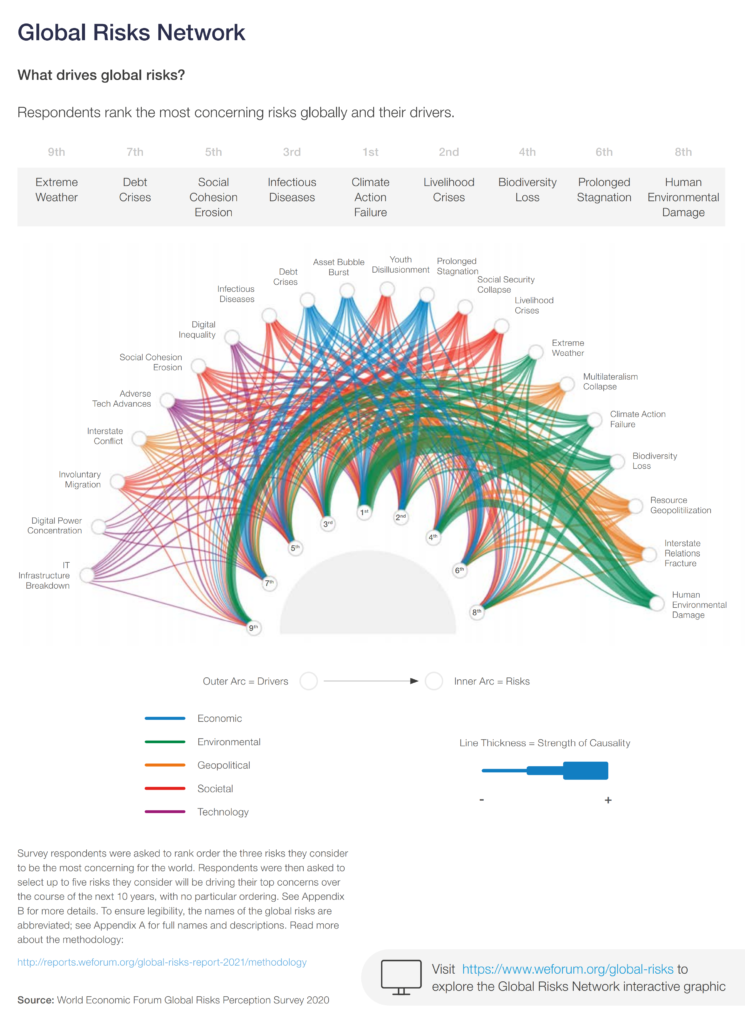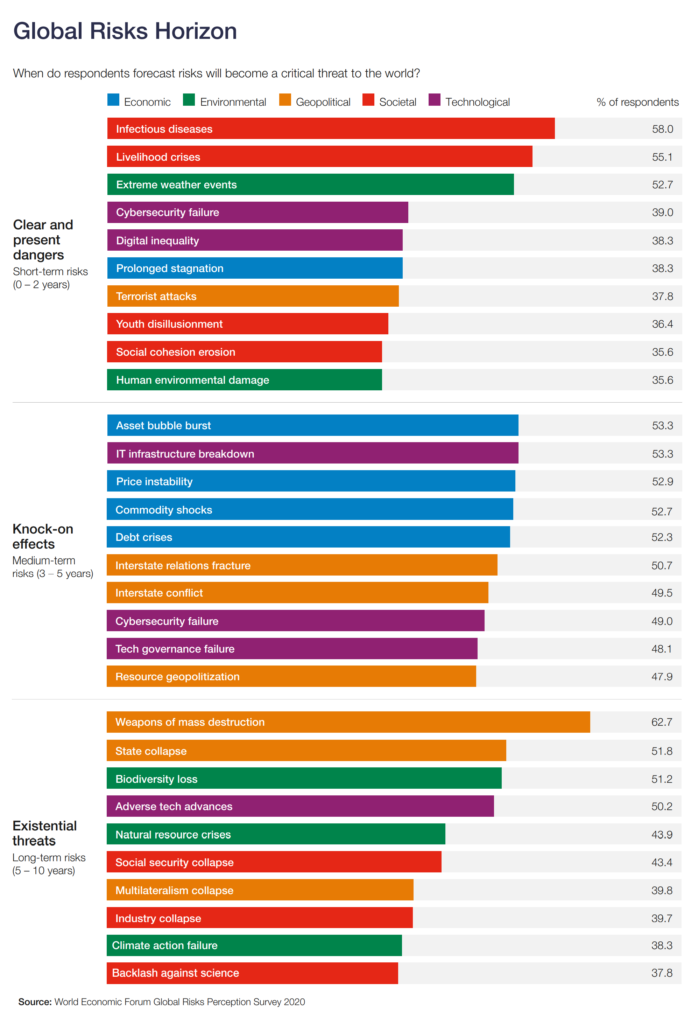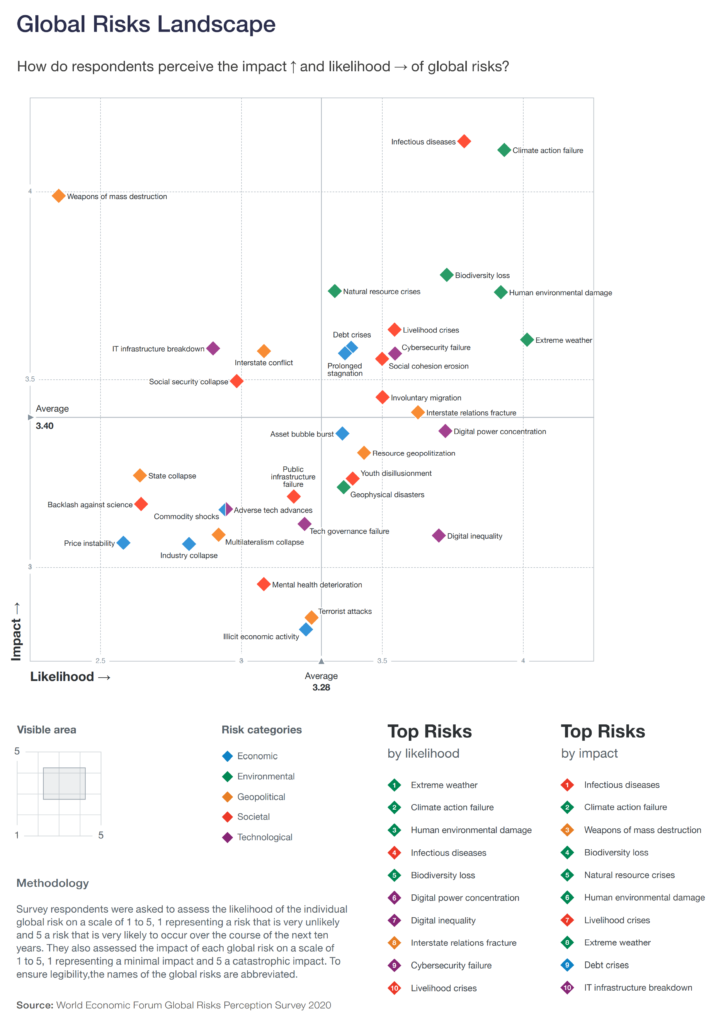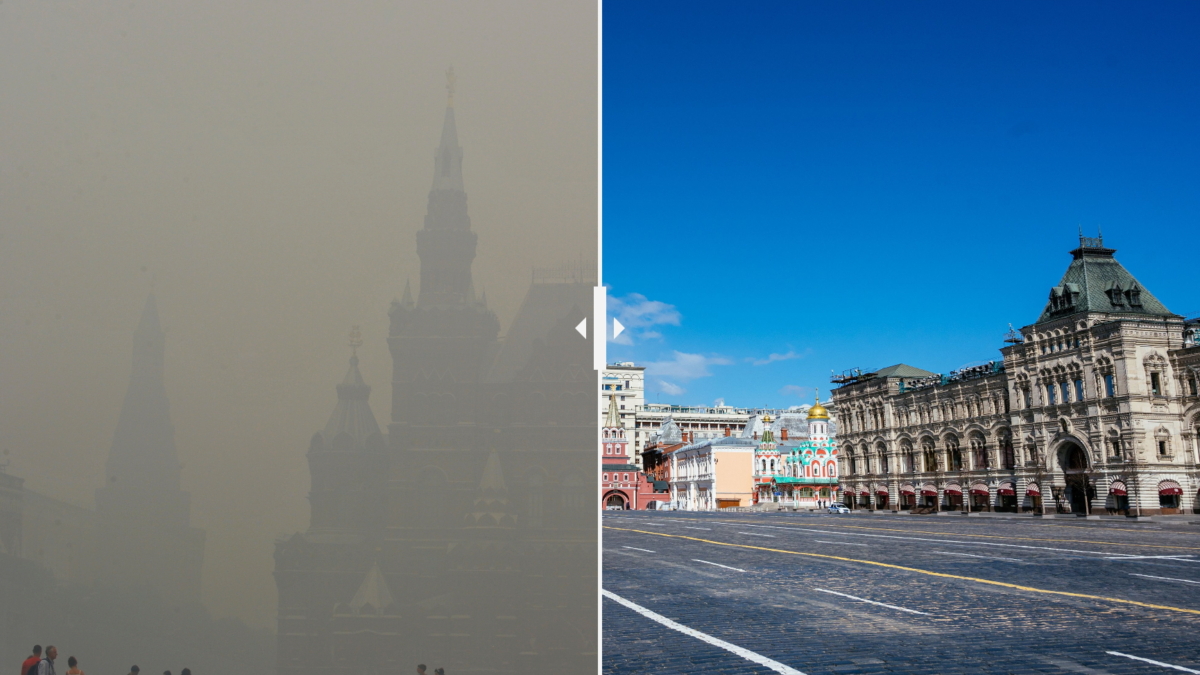WEF Global Risks Report 2021: Risk landscape dominated by pandemic and climate change – “Ignoring risks doesn’t make them go away”

By Colleen Zitt
3 February 2021
(Zurich) – As Chief Risk Officer for Zurich North America, I eagerly await the annual release of the World Economic Forum’s (WEF) Global Risks Report. This year’s 2021 edition is no exception. Its thoughtful, laser-sharp analysis of short- and long-term global risks — dominated by the COVID-19 pandemic and climate change — aligns with Zurich’s commitment to helping our customers navigate the challenges they face and, in doing so, build resilience for the future.
As a strategic partner of the WEF and the Global Risks Report, Zurich provides input into its strategy, scope and methodology, as well as guiding structure and content. It also underscores our commitment to understanding the emerging and evolving risks in the world.
COVID-19 and a new world of risk
In this year’s 16th annual Global Risks Report, it should come as no surprise that COVID-19 casts a grim shadow on nearly every facet of the risk landscape for the next 10 years. The pandemic’s grim human and economic toll has resulted in over two million deaths and millions of shuttered businesses and lost jobs. The pandemic has also ushered in the acceleration of a tech-dominated world that presents enormous benefits as well as unique dangers.
It also proves that ignoring risks doesn’t make them go away. Since 2006, the Global Risks Report has cited a global pandemic as a potential, serious threat. And yet, the world was unprepared. Infectious diseases topped WEF’s 2021 list of seven most impactful global threats in the coming decade. A key section of this year’s report explores the lessons learned from the COVID-19 outbreak and how society can better respond to the next worldwide crisis. These lessons apply on a smaller scale, too. Preparedness and awareness are always relevant keywords for businesses to carry into the future. Finding ways to cultivate long-term sustainability will be vital when transitioning to a post-COVID-19 economy.
The continuing threat of climate change
As the world has urgently responded to the pandemic, it has distracted many from the ongoing and potentially catastrophic threat of climate change. Environmental crises (e.g., extreme weather, human environmental damage, climate action failure, biodiversity loss, natural resource crises) have ranked as top risks in past reports and continue to do so in this year’s Global Risks Report.
This past year’s natural catastrophe event count is one of the highest on record. The National Oceanic and Atmospheric Administration (NOAA) recently reported that the U.S. experienced 22 weather/climate disasters with losses exceeding $1 billion each, which shatters earlier records (the previous being 16 in 2017 and 2011), for a total price tag that exceeds $95 billion in damages. This reality, together with the environmental risks cited in the report, point to a persistent challenge for everyone, including the business community.
Peter Giger, Zurich’s Group Chief Risk Officer, recently noted that global collaboration is critical to forging meaningful environmental solutions. As an insurance company, Zurich was a founding member of the United Nations’ Net-Zero Asset Owner Alliance, committing to a zero-emission portfolio of investments by 2050. Businesses can take a variety of steps, large and small, to promote environmental sustainability, such as reducing their carbon footprint, investing responsibly, and working with their communities and policy-makers to create meaningful change and positively contribute to the regions they serve.

Identifying additional challenges for businesses
In addition to infectious disease and climate concerns, there are other compelling issues highlighted in the Global Risks Report 2021 that businesses may need to identify and respond to:
- The acceleration of digital transformation: Financial, digital and reputational pressures resulting from COVID-19 have threatened to make many companies and their workforces obsolete. Although digital technology promises immense benefits, such as the creation of almost 100 million new jobs by 2025, it may also displace 85 million jobs that become automated in five years. With many adults still lacking basic digital skills, there’s a danger of deepening existing inequalities between the “digital haves and have-nots.” The good news, according to the report: Two-thirds of employers expect to see a return on their investment in upskilling and reskilling within one year.
Another consequence of digital transformation, the report cautions, is that it increases cyber-risk exposures. This will require companies to constantly review their risk mitigation strategies. - A younger generation disillusioned about the future: The pandemic has made a younger generation vulnerable to widespread economic and societal shocks. Young adults (ages 15 to 24), coined “Pandemials,” have grown up with the lingering effects of the 2008-2009 financial crisis. Today, they’reentering “an employment ice age” of dwindling opportunities exacerbated by COVID-19. They will also face serious challenges to their education, as well as social fallout, combined with the pre-pandemic threats of environmental degradation and social disruption as technology overhauls industries. These problems all challenge their economic prospects and mental health and create the risk of “youth disillusionment,” which the report cites as a critical, material threat. As baby boomers retire and the workforce of the future evolves, companies will need to effectively find solutions to support this generation. This may include investing in benefit plans, apprenticeships, retraining, and exploring alternative work arrangements, to name just a few examples.
- Rebuilding the business landscape: How businesses and governments make the post-pandemic transition from emergency responses to recovery tactics will have a major impact on the economy. The Global Risks Report 2021 notes that digital disruption and changes in consumer behaviors and the nature of work, which existed prior to the pandemic, were amplified by the COVID-19 crisis. Economic stagnation and the loss of countless small businesses have widened gaps between large and small companies. Indeed, the report notes that 20% of U.S. firms with fewer than 500 employees closed permanently between March and August 2020. Many that survived remain dependent on state support.

The transformation of businesses and industries will require agile and distributed workforces, hybrid working options, and comprehensive reskilling and upskilling of employees. Companies will also need to rethink their physical space and organizational design as they transition their workforces into new roles while they navigate the opportunities that automation and digitalization can offer.
The Global Risks Report also emphasizes the need for companies to reflect societal values and follow through with meaningful actions to “support a broad-based and sustainable economic recovery and growth, as well as the strengthening of societal trust and reduction of inequality. Such outcomes are critical for meeting current and future crises.”
The big picture: Finding solutions
A key section of this year’s Global Risks Report, which I alluded to earlier, reflects on the worldwide responses to COVID-19. In doing so, it offers lessons learned to bolster overall resilience — not for the current pandemic but rather, learnings that can be applied to the next global crisis. These also have relevance for a variety of organizations and challenges. The takeaways include:
- Building analytical frameworks that take a holistic and systems-based view of risk impacts to help identify potential dependencies, spill-over consequences, vulnerabilities and blind spots.
- Identifying and investing in “risk champions” who will spur innovation in risk analysis, financing and response capabilities, and foster relationships between scientific experts and political leaders.
- Building trust through clear and consistent communication, and combating misinformation.
- Exploring new types of public-private partnerships on risk preparedness in technology, logistics and manufacturing.
The Global Risks Report’s recommendations for positive change often get lost amid its examination of short- and long-term risk scenarios. As a leader in managing risk, Zurich understands that identifying problems is only part of the equation. It’s just as important to develop risk management strategies that recognize opportunities as well as weaknesses. Although the pandemic has presented businesses with daunting and unfamiliar challenges, addressing these risks is the first step in building resilience against them and, in doing so, paving a path for success.
Download the Global Risks Report 2021
Global Risks Report: Building resilience in COVID-19’s shadow


